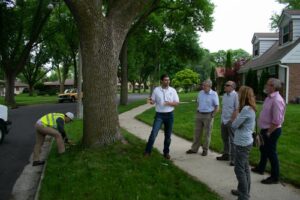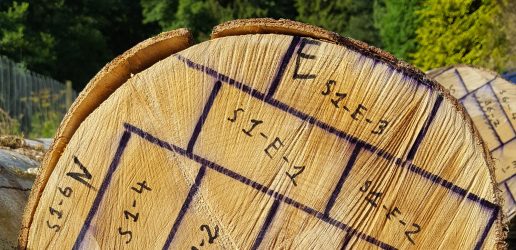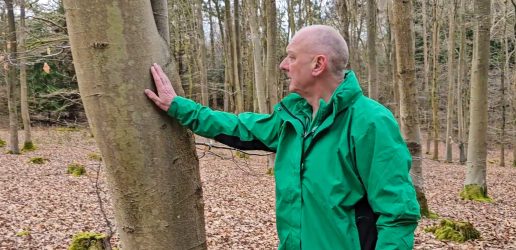Emerald ash borer (EAB, Agrilus planipennis) is a wood-boring beetle, native to SE Asia, that causes damage to ash trees (Fraxinus species). While EAB is not currently present in Europe, it has invaded and established in North America, where it is already causing extensive damage and high mortality to native ash species. To prepare for any future risk to Europe and, especially, the UK, a team from Forest Research, Fera and The Tree Council paid a visit to the US to find out more about this pest and learn from their experiences in urban management of EAB.

The group, which included Mariella Marzano and Hugh Evans from Forest Research, visited a number of cities specially chosen to include municipalities that have been dealing with EAB for varying lengths of time. Some have several years’ experience of EAB, while others are just starting EAB management or, in some cases, are yet to encounter the pest.
The aim of this fact-finding trip was to learn about the different approaches to dealing with the impacts of EAB in city neighbourhoods and parks, and how to engage communities in management efforts. A number of themes and lessons emerged.
Lessons learned

Forest Research, in partnership with Edinburgh Napier University, have taken a first step in systematically assessing the timber potential of underutilised species in the UK.
Tree professionals working in arboriculture are being asked to take part in a new tree health survey as part of a DEFRA-funded project looking at pathways and practices concerning the tree disease, canker stain of plane.

Nature, the world’s leading multidisciplinary science journal, has published findings from a new global study investigating which tree species fix the most carbon.

Forest Research, in partnership with Edinburgh Napier University, have taken a first step in systematically assessing the timber potential of underutilised species in the UK.
Tree professionals working in arboriculture are being asked to take part in a new tree health survey as part of a DEFRA-funded project looking at pathways and practices concerning the tree disease, canker stain of plane.

Nature, the world’s leading multidisciplinary science journal, has published findings from a new global study investigating which tree species fix the most carbon.